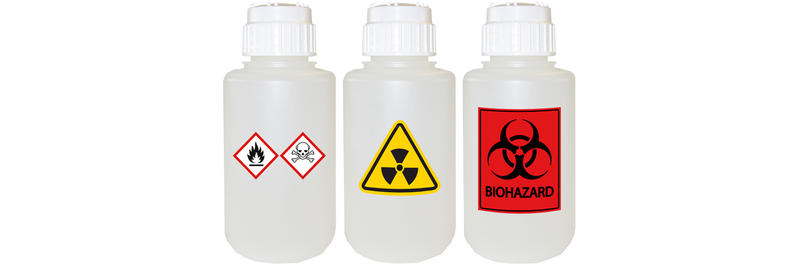How Reclaim Waste can Save You Time, Stress, and Money.
How Reclaim Waste can Save You Time, Stress, and Money.
Blog Article
All about Reclaim Waste
Table of ContentsRumored Buzz on Reclaim WasteAn Unbiased View of Reclaim WasteRumored Buzz on Reclaim WasteThe 15-Second Trick For Reclaim WasteEverything about Reclaim Waste
Discover the kinds, incidents, and types of fluid waste. Residential sewage waste refers to the waste and items from a household septic system. This kind of waste is created by human beings in homes, schools, and various other buildings. This only includes septic systems that have a drainpipe area. The appropriate monitoring and disposal of residential sewer waste need liquid waste to be moved to a sewer treatment plant where the appropriate approaches and tools are applied to detoxify and take care of waste.
Commercial waste usually consists of possible threats, such as combustible materials or a mix of fluid and strong waste items, and calls for an advanced and thorough disposal process. The disposal of commercial waste generally includes the filtering of waste prior to transport to make certain safe and appropriate disposal. Industrial waste is produced from by-products and overflow of industrial procedures and manufacturing.
This sort of waste can not use the exact same sewage administration transport or procedures as septic or industrial liquids. The commercial waste monitoring procedure needs the inspection and testing of liquid waste before it undertakes the disposal process (liquid waste removal). Drainage waste is the fluid waste that comes from runoff and excess stormwater in highly populated areas or cities
Runoff waste can trigger contamination and flooding otherwise taken care of effectively. Discover more regarding sewage system cleansing and waste management. Making certain correct waste monitoring can prevent calamities and lower environmental harm. Both individuals in residential settings and professionals in commercial or manufacturing industries can benefit from understanding the procedures and guidelines of fluid waste administration.
Some Known Questions About Reclaim Waste.
Contact PROS Services today to learn about our waste management and disposal services and the proper means to care for the liquid waste you create.
(https://reclaimwaste1.wordpress.com/2024/11/12/efficient-liquid-waste-disposal-in-melbourne-reclaim-wastes-expert-solutions/)Do you recognize what happens to your water when you draw the plug, purge the bathroom or drain the cleaning machine? No? Well, it's worth recognizing. This so-called 'wastewater' is not only a vital resource yet, after therapy, will certainly be launched to our land, waterways or the ocean. Used water from bathrooms, showers, bathrooms, kitchen area sinks, washings and industrial processes is understood as wastewater.

water used to cool machinery or clean plant and equipment). Stormwater, a kind of wastewater, is runoff that streams from agricultural and urban locations such as roofs, parks, gardens, roadways, paths and seamless gutters right into stormwater drains, after rain. Stormwater streams unattended straight to regional creeks or rivers, eventually reaching the ocean.
Not known Details About Reclaim Waste
In Queensland, most wastewater is treated at sewer therapy plants. Wastewater is carried from residential or commercial websites through a system of drains and pump stations, referred to as sewage reticulation, to a sewage therapy plant. City governments develop, keep and run most sewer therapy plants. Operators are licensed under the Environmental Protection Act 1994 to discharge cured wastewater at an appropriate ecological requirement into waterways.
The Division of Natural Resources advises city governments about managing, operating and keeping sewage systems and therapy plants. In unsewered areas, city governments might require householders to install private or house sewage treatment systems to treat residential wastewater from commodes, kitchens, washrooms and washings. The Department of Natural Resources authorises using family systems when they are shown to be efficient.
A lot of stormwater gets no treatment. In some brand-new neighborhoods, treatment of some stormwater to get rid of litter, sand and gravel has actually started utilizing gross contaminant traps. Wastewater therapy happens in four phases: Eliminates strong matter. Larger solids, such as plastics and various other things mistakenly discharged to sewage systems, are gotten rid of when wastewater is travelled through displays.
Uses little living organisms recognizes as micro-organisms to damage down and eliminate remaining liquified wastes and great particles. Micro-organisms and wastes are integrated in the sludge.
The Of Reclaim Waste
Nutrient removal is not offered at all sewage therapy plants since it calls for costly specialized devices. Clear fluid effluent generated after therapy might still include disease-causing micro-organisms - liquid waste removal.

Many wastewater moves into the sewage system. Under the Act, regional federal governments provide approvals and permits for environmentally pertinent tasks (ERAs) entailing wastewater releases that could have a regional effect.
The Best Strategy To Use For Reclaim Waste
Monitoring offers accurate details regarding water quality and can validate that permit problems are being met. The information acquired with monitoring offers the basis for making water high quality choices.
Report this page